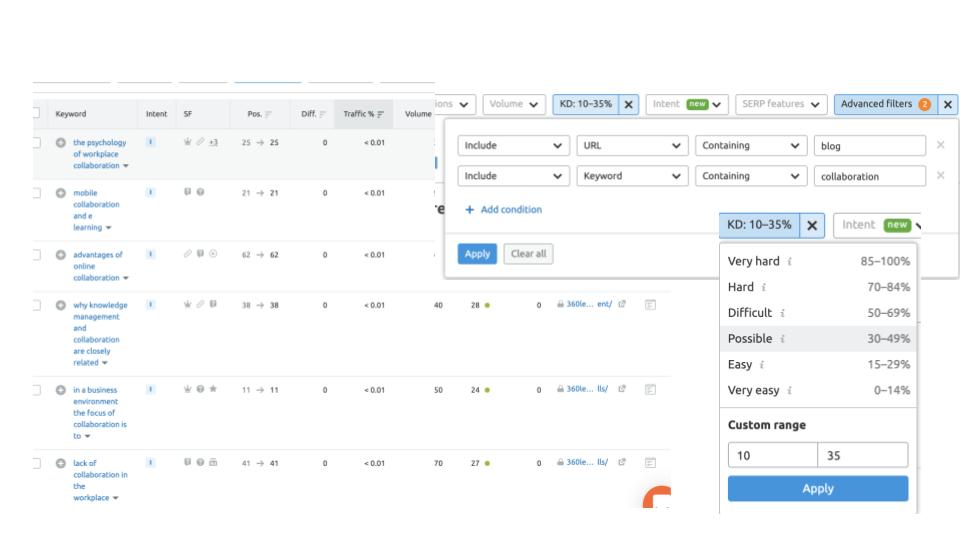
Growing a SaaS business requires organic content marketing – not only because it is essential for any company but especially true of those in the SaaS industry.
The reason content has the potential to have a bigger impact on a SaaS buyer audience is due to how a single SaaS product can impact the business functionality.
When we truly grasp what happens as a result of that, it helps us understand how to communicate with our target audience on a level that gets through. This is in essence what we want to achieve with our content marketing.
When we think of our buyer, we must consider how high the stakes are for them. Where and how does this purchase affect them? The one responsible for introducing and implementing your SaaS solution to their company has a lot to prove, potentially lose, or if done right, gain.
The first front is on the business level. A problem needed to be solved, something needed to be fixed and your buyer is in the position to be the hero. To management, they want to prove that they can be relied upon to find the best solution to that problem. To accomplish this, they want to validate the value of the purchase by proving ROI for the business’s bottom line.
The second front is with the ones who will use the SaaS product, the buyers’ coworkers. A new SaaS tool can mean a lot of change for how some in the company go about doing their jobs on a daily basis.
So our buyer bears the responsibility of ensuring that this change is a positive one for their coworkers and ultimately makes their jobs easier.
The third and perhaps most important impact on your SaaS buyer is how it benefits their professional growth and career. It presents an opportunity for leadership experience. All the benefits to the business from using your SaaS product can be credited to your SaaS buyer who introduced and implemented it.
It is so important that your SaaS content strategy addresses these needs. For your target audience, who constantly look to educate themselves on these fronts, it presents a great opportunity for your SaaS brand to serve as a fountain of knowledge to help your audience.
As the provider of the solution, the SaaS company is naturally positioned as a trusted source. The ones who use your SaaS product will rely on the content you create as their primary source of information and knowledge.
Helping your customers with valuable content in the above areas is essential for cultivating a devoted clientele, forming your brand as a trusted resource of information, and attaining long-term revenue.
Here is how you begin to map out what to write about: The Go-To-Market strategy should be your guide to your brand story and value proposition. When done correctly, the GTM strategy maps out the buyer’s journey related to your product and what they need or want to learn at each stage until they are ready to buy.
Now we’ll explore a few techniques for generating unlimited content ideas that will rank for SEO and address your buyer’s pain points.
This will serve as your content topics outline, dividing it by the stages of the buyer’s journey.
Using the buyer’s journey, you can write questions your buyer needs to answer to advance to the next stage of their journey.
Join communities that your buyer is part of like Slack channels and Discord.
Visit the platforms they might go to get answers to their pressing questions like Quora.
Make lists and categorize the questions that are relevant to your product. From these questions you can extract keywords.
Collecting the keywords that are relevant to your target audience’s questions should be your first step in your keyword research.

Before creating content, it is always wise to conduct a thorough analysis of competitors. The first thing to look for is where to steer clear of topics that already have too much content written about them.
However, it is critical to be careful with your approach to how you look at your competitor’s digital activity.
What you should not do: decide to write based on what your competitors are writing about.
Instead, you want to be strategic, finding the opportunities created by gaps in your competitor’s activity.
You can do this by using an SEO tool like Semrush to analyze their blog content. Which keywords your competitors have a strong ranking for, will not be the ones to focus on at an early stage. The keywords that have low rankings and do not bring your competitor’s website low organic traffic present you with an opportunity to fill the gap, and that is where you should begin.

Many content marketers do not properly distinguish between content types.
If you want to make the most of your content marketing efforts it is essential to understand the proper place for each piece of content.
So how should a SaaS company prioritize these in their content strategy?
Social media is a valuable tool for building brand awareness, building a community and engaging with customers. As a B2B SaaS startup, your SEO-based blog should be the top priority as it will generate sustainable traffic and leads, establish authority and thought leadership, and create content that converts over the long term.
Investing in SEO-based content marketing for your B2B SaaS startup is a crucial decision you can make to ensure long-term success. Unlike social media, which requires unnecessary expenses to reach a broader audience, SEO-based content can bring organic traffic and leads without the need for continuous investment. Investing even modestly in SEO early on will not only reap big rewards but also become more powerful over time. Make sure you prioritize this part of your content marketing strategy today!
Strategically planning your content creation with SEO-centered pieces based on the buyer journey stages not only assists you in choosing keywords but also provides a clear comprehension of what type of material is meant for every stage and enables you to create realistic objectives.
The Content Marketing Institute’s 2022 survey revealed that the greatest planning challenge content marketers face is in creating content that appeals to the different stages of the buyer’s journey.
Let’s make sense of what defines the content at each stage of our SaaS buyer’s journey:
In the awareness stage of the B2B SaaS buyer journey, potential customers are just beginning to explore their challenges and search for solutions. At this stage, it’s important to create content that raises awareness of your brand by addressing common pain points or challenges that your potential customers are facing and then educating on how to solve them.
Awareness stage content will focus on search terms with the highest search volume, that have informational intent, and will see the lowest number of conversions.
Content in the awareness stage can convert readers with educational content assets such as eBooks and white papers and webinars.
The consideration stage of the B2B SaaS buyer’s journey is the point where potential customers have identified a problem or opportunity and are looking for information to help them evaluate possible solutions. At this stage, your content should focus on providing information that helps potential customers to understand their options and make informed decisions.
Good content for this stage will compare your product to your competitors. Highlight your strengths and weaknesses in relation to other solutions available in the market. This can help potential customers to understand the unique value proposition of your product and how it compares to other options.
Consideration stage content will be based on search terms with medium search volume and ‘light’ buying intent.
Bottom of the funnel content at the decision stage should be made of search terms with lower search volume and higher buying intent. Use long tail keywords that address a specific part of a larger challenge.
Lower volume keywords can help you reach your target audience and draw relevant traffic to your website. As they are less competitive.
blog posts that rank for decision stage keyword terms outperform blog posts going after larger volume keywords.
keywords that most SaaS businesses are bidding on in paid ads like ______solution, ______software, ________tool.
Many of your competitors probably make the mistake of only focusing on these in their paid search campaigns, and therefore leave them out of the organic content strategy. That is exactly why this is where you will have an opportunity to get ahead.
Through every step of creating your content marketing strategy and every step of its execution, it is important to ensure that your content reflects the GTM strategy so that your unique selling proposition to the ideal customer profile is clearly communicated and consequently distinguishes you from other contenders in the sector.
When you create a SaaS content strategy that is aligned with your go-to-market strategy, you will guide your potential buyers through their journey of discovering, liking, and trusting your brand! And they will inevitably want to see how your SaaS product works.